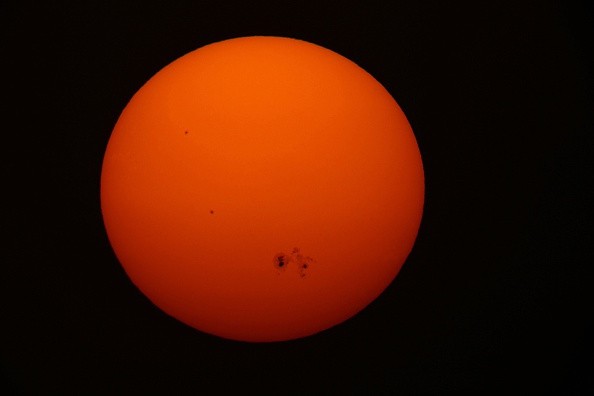The next chance to witness the northern lights may be arriving shortly, due to scientists' detection of a huge object on the sun's surface.
Over the last week, astrophysicists have been keeping a close eye on activity on the sun's surface, and a new breakthrough has intrigued their interest.
Sunspot "spotted"

According to Accuweather, sunspot at least twice the size of the Earth has appeared in recent days. This area was assigned the designation AR2975 when it first appeared on Wednesday.
According to NOAA's Space Weather Prediction Center, sunspots are zones on the sun with a heavy proportion of magnetic activity.
Because they are cooler than the rest of the solar surface, these regions can darken.
Astrophysicists are maintaining a careful check on the sun's area, not only because of size but also because of what it might have in the following days.
When the conditions are favorable, a sunspot can cause a solar flare, launching a dense cloud of electric charges hurtling through space known as a coronal mass ejection (CME).
Whenever a CME reaches the Earth, it may be because of stunning manifestations of the aurora, often referred to as the northern lights.
The larger the CME, the more likely it is that the aurora will be visible in places like Canada, the northern United States, and northern Europe.
As the sun becomes more active, the frequency of sunspots, solar flares, and opportunities to see the northern lights is expected to increase in the coming years.
The sun, like the seasons on Earth, goes through different phases during its natural 11-year cycle.
The sun has just completed its period of low activity, known as the solar minimum, and is now on its way to a period of high activity, known as the solar maximum.
Because the solar peak is not bound to happen until 2025, astronomers will have their work cut out for them in the years ahead monitoring the sun, while stargazers will have plenty of time to enjoy views of the aurora borealis.
What is a sunspot?
The heating rate of the photosphere is 5,800 degrees, Kelvin. Sunspot temperature fluctuations are roughly 3,800 degrees, Kelvin, as per space.
Only in relation to the brighter and hotter photosphere areas around them so they look black.
Sunspots may be quite big, with diameters of up to 50,000 kilometers.
They are caused by unfathomable interactions with the Sun's magnetic field.
However, a sunspot is similar to the cap on a soda bottle: shake it up and you can cause a large eruption. Sunspots form over areas of intense magnetic activity, and when that energy is released, solar flares and large storms known as coronal mass ejections form.
Solar flares
Adjacent to sunspots, electromagnets constantly tangle, cross, and rearrange. This can result in a solar flare, which is a massive burst of energy, as per NASA.
Solar flares emit a large amount of radiation into space. If a solar flare is very powerful, the radiation it emits can disrupt our radio communications here on Earth.
When a CME is especially potent, it can also interact with power utility grids, resulting in power shortages and outages at their worst.
Related article: Experts Struggle to Understand Mysterious Sunspots
© 2025 NatureWorldNews.com All rights reserved. Do not reproduce without permission.





